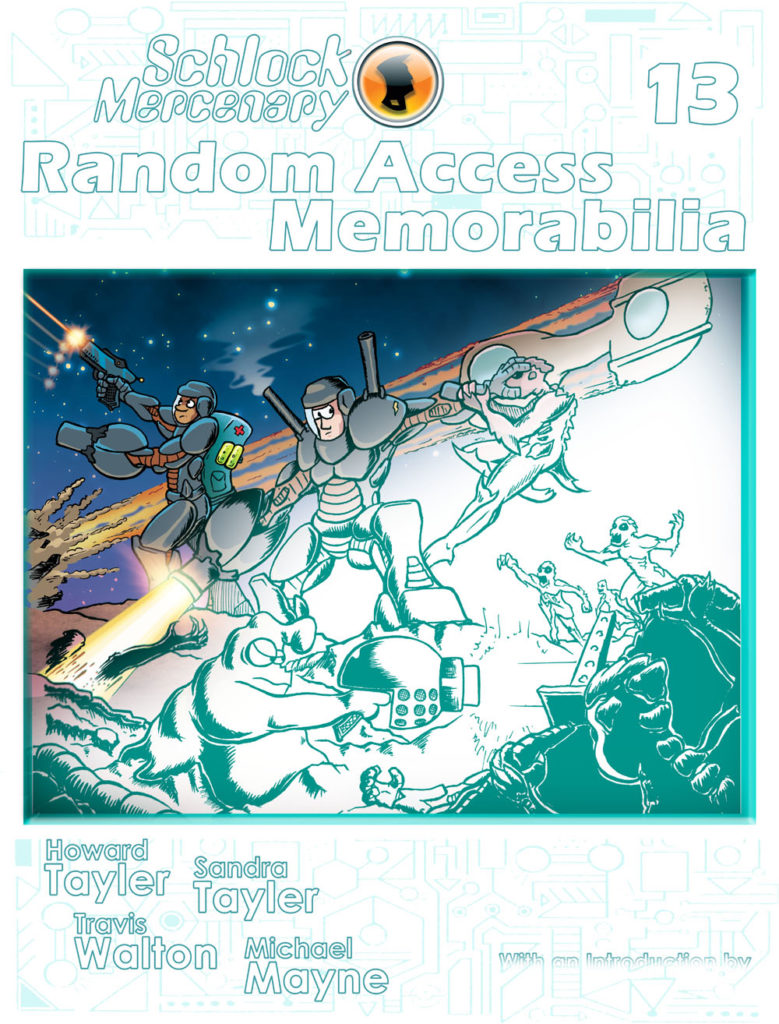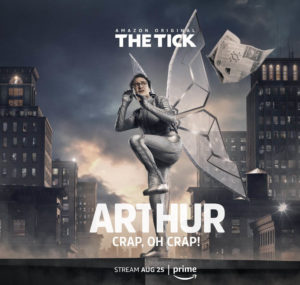I illustrate everything by hand, using pencil and ink on paper. In the last three years my choice of tools for making comics has shifted a bit. Here’s the current suite¹:
Penciling
Since about 2016 I’ve been penciling in blue or red (or sometimes both). I use mechanical pencils exclusively.
- Kaweco AL Sport 0.7mm pencil
- Paper Mate Clear Point 0.7mm pencil
- Pilot 0.7mm Eno Soft Blue
- Pilot 0.7mm Eno Red
I sometimes use 2mm “clutch” pencils for construction lines, especially in backgrounds and on large pieces.
- E+M Workman Lead Holder (2mm)
- IC Comic Draft Blue 2mm leads
When I erase, I’m either doing broad cleanup, or removing specific clutter.
- Prismacolor kneaded eraser
- Tombow Mono Zero eraser
I also use some stencils and templates for construction lines. I have circle templates, ellipse templates, straight-edges, french curves, and flexible straight-edges. Those last three are critical for backgrounds involving any sort of perspective, or architecture.
Inking
I ink in three stages. In the first I’m taking care of the outlines, and committing to a few of the many possible lines apparent in my blue line work.
- Staedtler Mars Pigment Liners, .01, .03, .05, and .07mm black
Those pigment liners have been my go-to since the very beginning of Schlock Mercenary in 2000. I’ve killed at least a thousand of them in the last 17 years. I’ve tried several other brands², but always came back to the Staedtlers.
The second stage is where the picture really comes together. I use brush pens to add weight to some of the lines, and to shade or fill. (I used to do this with the pigment liners, but in 2015 I started brushing³. I still have a lot to learn!)
- Tombow Fudonosuke hard
- Tombow Fudonosuke soft
- Pilot Futayaku double-sided brush
- Pentel Pocket Brush
The third stage is backgrounds and cleanup. For this I’m using the pigment liners to put lines down, and white gel to make bad lines and smudges go away.
- Uni-ball Signo Broad UM-153
If you ever want to peer behind the curtain and see how non-magical things are, hold one of my originals up to the light and look for the places where white gel is covering up my slop. Every piece I do has at least some of this. EVERY LAST ONE.
Coloring
At the outset I said that I work in pencil and ink on paper. When you see my work in color, that’s because somebody else colored it. For Schlock Mercenary, that’s Travis Walton. I scan my work at 600dpi, in black-and-white, with the threshold set low enough to ensure that even the scritchiest blue scores in the paper vanish. Travis colors in Photoshop, and passes the files back to me in glorious CMYK.
Recommendations
I might get around to reviewing some of the products above, but in terms of recommendation, I’ll lead with this: if you’re learning to make art, always have at least one tool lying around that you do not know how to use yet. Let that tool tempt you into picking it up and making a mess, because after the mess you may discover beauty, or exhilaration, or this-goes-faster, and that’s how we level up.
¹Everything I use is available from JetPens, with the exception of the Paper Mate mechanical pencils⁴, which I think I got at Wal-Mart. I do this because it means I don’t need to go shopping. I can just click some buttons and supplies will arrive at my house.
² Sakura Pigma Micron is a favorite for a lot of cartoonists. I used them for a while, but they flowed just a teency bit too fast for me, making some of my lines fuzzy.
³Lar DeSouza introduced me to the Tombow Fudonosuke pens in a classic “when the student is ready the master shall appear” moment. I still haven’t bought him enough drinks to pay him back.
⁴ I bought these because colored leads are messy, and tend to gum up even the very best pencils. My favorite three mechanical pencils failed on the same day, so I executed some warranties, and then bought some cheap replacements so I could keep working. The cheap pencils work just fine, though they lack the hefty joy of the fancier tools.



